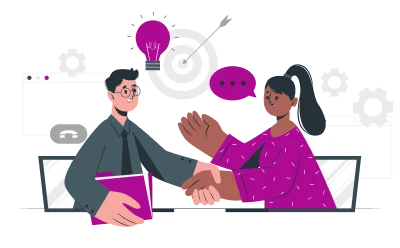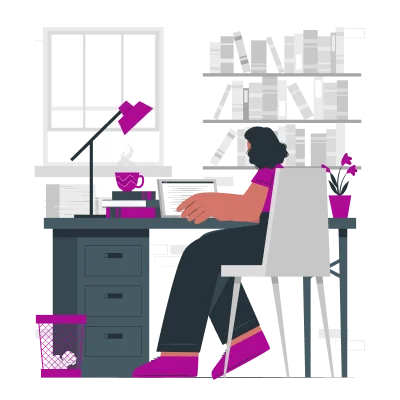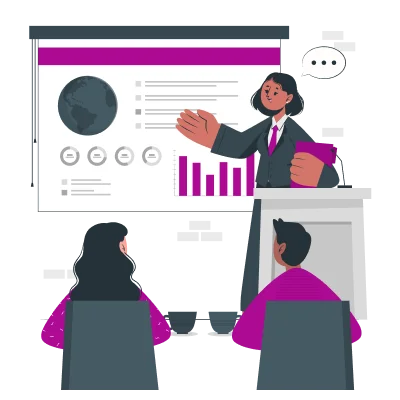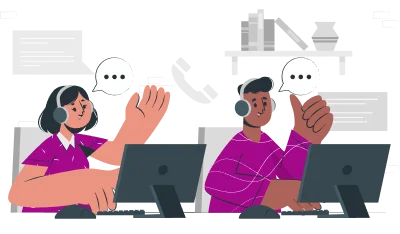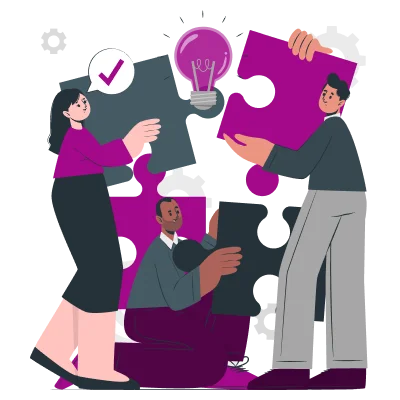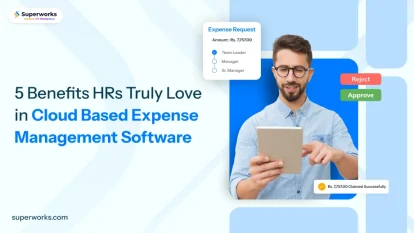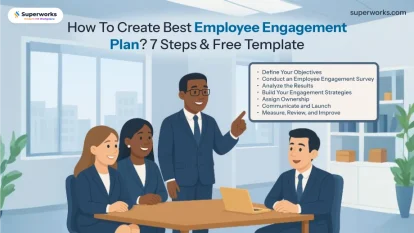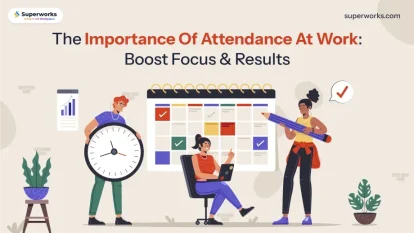Grab a chance to avail 6 Months of Performance Module for FREE
Book a free demo session & learn more about it!
-
Will customized solution for your needs
-
Empowering users with user-friendly features
-
Driving success across diverse industries, everywhere.
Grab a chance to avail 6 Months of Performance Module for FREE
Book a free demo session & learn more about it!
Superworks
Modern HR Workplace
Your Partner in the entire Employee Life Cycle
From recruitment to retirement manage every stage of employee lifecycle with ease.



Seamless onboarding & offboarding
Automated compliance & payroll
Track performance & engagement
Employee Onboarding and Offboarding Checklist: In 10 Easy Steps
- onboarding and offboarding employees
- 6 min read
- October 20, 2023
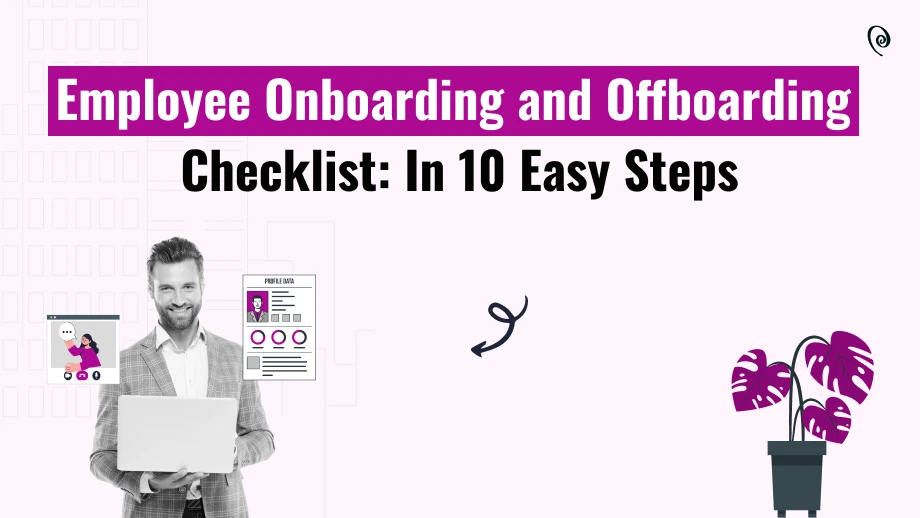
In the rapidly evolving HRMS software industry, effective employee onboarding and offboarding process have become more crucial than ever for organizations seeking to optimize their Human Resource Management. This blog post deeply discusses the significance of employee onboarding and offboarding, offering a comprehensive checklist of 10 easy steps to help HR teams seamlessly navigate these pivotal phases of an employee’s journey. These steps are carefully designed to enhance the onboarding and offboarding experiences.
- What Is employee onboarding and offboarding?
- Importance of Employee Onboarding and Offboarding
- The 10 Easy Steps for HR Teams During Employee Onboarding
- Step 1: Preparing the Workspace
- Step 2: HR Document Compilation
- Step 3: Orientation and Training
- Step 4: Introduction to the Team
- Step 5: Employee Onboarding Software
- Step 6: Benefits and Perks
- Step 7: Continuous Support
- Step 8: Performance Expectations
- Step 9: Feedback and Evaluation
- Step 10: Employee Engagement
- The Ultimate Checklist for Smooth Employee Offboarding
- Conclusion
What Is employee onboarding and offboarding?
Employee Onboarding
onboarding offboarding process is the systematic process of integrating new hires into the organization, ensuring they are equipped with the tools, knowledge, and resources needed to succeed. It goes beyond mere paperwork, encompassing cultural assimilation, training, and orientation.
Employee Offboarding
On the flip side, employee offboarding, which includes the employee exit procedure, manages an employee’s departure from the organization. It encompasses knowledge transfer, equipment retrieval, and exit interviews. Proper offboarding is essential for maintaining organizational security and ensuring a smooth transition.
Importance of Employee Onboarding and Offboarding
1. Setting the Stage for Success
An effective onboarding process is the first step in nurturing a successful employee-employer relationship. It helps new hires adapt to their roles, fosters a sense of belonging, and improves job satisfaction, ultimately leading to higher retention rates. A well-structured employee onboarding process is your competitive edge in a world where attracting and retaining talent is a constant challenge.
2. Protecting Your Assets
Robust offboarding is equally vital. It ensures the security of sensitive company data, equipment, and intellectual property. It’s the last defense in safeguarding your organization against potential threats, especially in the HRMS software industry, where data privacy and security are paramount.
The 10 Easy Steps for HR Teams During Employee Onboarding
A well-structured employee onboarding and offboarding checklist are essential for a smooth organizational personnel transition. By meticulously planning and executing these processes, you ensure that new hires are efficiently integrated into your team while departing employees leave without leaving behind critical gaps. In the below step, we explore the importance of these employee offboarding checklist and how they can benefit your business.
Read more: 7 Compelling Reasons to Invest in HR Management Software for Employee Management

Want to improve Employee Onboarding and Offboarding?
Absolutely! Improving employee onboarding and offboarding is crucial for a smooth and efficient HR process. Get started with Superworks now and simplify your effective onboarding process.
why are you waiting for? Click the below button to get started!
Step 1: Preparing the Workspace
Ensure the employee’s workspace has all necessary equipment, including a computer, phone, and stationery. This boosts productivity and leaves a positive impression on new hires.
Step 2: HR Document Compilation
Collect and organize all the required HR document, such as tax forms, insurance policies, and employment contracts. This step ensures compliance and sets the stage for smooth employee management system.
Step 3: Orientation and Training
Provide new hires with a thorough orientation, including company culture, policies, and job-specific training. This is where they start feeling like part of the team.
Step 4: Introduction to the Team
Facilitate introductions to colleagues and team members to help new employees feel welcome. A sense of belonging fosters long-term commitment to the organization. With this step, you can do effective onboarding of new employees.
Step 5: Employee Onboarding Software
Incorporate employee onboarding software like Superworks! HRMS to streamline and automate the process, making it more efficient and error-free. In the digital age, HRMS software is a game-changer, reducing manual workload and improving accuracy while reaping the benefits of an effective onboarding process, such as higher employee retention, quicker productivity gains, and smoother cultural assimilation.
Step 6: Benefits and Perks
Communicate employee benefits, perks, and policies to ensure that new hires are well-informed. Employee satisfaction is often tied to bonuses, making this step vital for long-term engagement.
Step 7: Continuous Support
Offer ongoing support and mentorship to help new employees navigate their roles effectively. This ongoing support allows employees to overcome initial challenges and excel.
Step 8: Performance Expectations
Define clear performance expectations and objectives, ensuring that employees understand their roles. This clarity is essential for motivating employees to achieve their best.
Step 9: Feedback and Evaluation
Establish a feedback mechanism for regular evaluations and performance discussions. Constructive feedback is a cornerstone of continuous improvement, making this step vital for employee development.
Step 10: Employee Engagement
Encourage employee engagement and participation in company events and activities to foster a sense of belonging. Employees who are actively engaged are likelier to remain with the company, positively impacting its success.
Also, See: 10 Common Problems Of HR Onboarding Can Be Solved By HRMS Software
The Ultimate Checklist for Smooth Employee Offboarding
Step 1: Notice Period
Determine and communicate the notice period required for resigning employees. A transparent notice period is essential for a smooth transition. This notice period allows HR teams to make necessary arrangements and ensures the departing employee has sufficient time to complete their responsibilities and knowledge transfer.
Step 2: Exit Interviews
Conduct exit interviews to collect feedback and insights from departing team members. This feedback can be invaluable in improving your organization and retaining talent. It offers a unique opportunity to understand why employees are leaving and identify areas for improvement. This information can help fine-tune your HR processes and enhance employee satisfaction in the future.
Step 3: Return of Company Property
Ensure that the departing employee returns all company assets, including laptops, access cards, and keys. Promptly collecting these assets is crucial for the security and continuity of your business. It’s not just about physical assets but also access to software and systems. Collecting and documenting these items is essential for maintaining data security and preventing unauthorized access. predictive analytics in hr can also manage all company property using employee offboarding software.
Step 4: Data and Access
Disable access to company systems and ensure sensitive data is transferred or deleted securely. In the era of data breaches, securing your data is non-negotiable. When employees leave, they must remove their access to sensitive information. This not only protects your company but also respects the privacy of the departing employee.
Step 5: Knowledge Transfer
Facilitate the transfer of knowledge and responsibilities, including employee onboarding to other team members. Effective knowledge transfer ensures a seamless transition without disrupting ongoing operations. It’s vital to ensure that important projects or tasks stay on up. By having a structured knowledge transfer process, you can guarantee business continuity and prevent the loss of critical information.
Conclusion
Effective employee onboarding and offboarding are paramount for organizational success in the HRMS software industry. By following these 10 easy steps, HR teams can optimize the onboarding and offboarding experiences, ensuring a smooth transition for employees while safeguarding company assets. Integrating employee onboarding software into HRMS further streamlines these processes, promoting efficiency and accuracy.
By prioritizing effective Employee Onboarding and Offboarding process, organizations can reap the benefits of increased employee satisfaction, higher retention rates, and enhanced security—all key elements in the competitive landscape of the HRMS software industry. So, take these steps to heart and watch your organization thrive in the modern world of human resource management, securing a brighter future for your HR processes.
